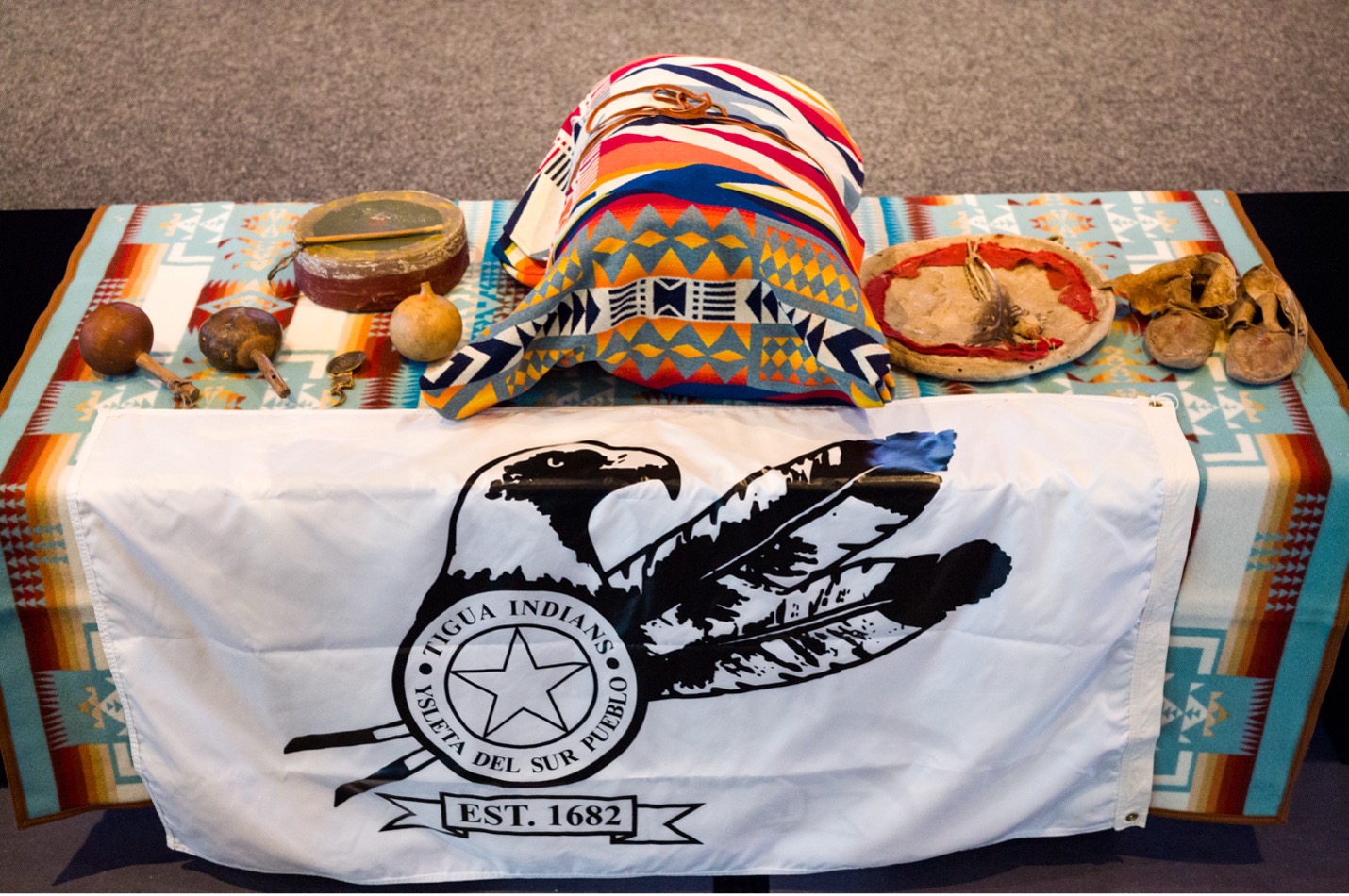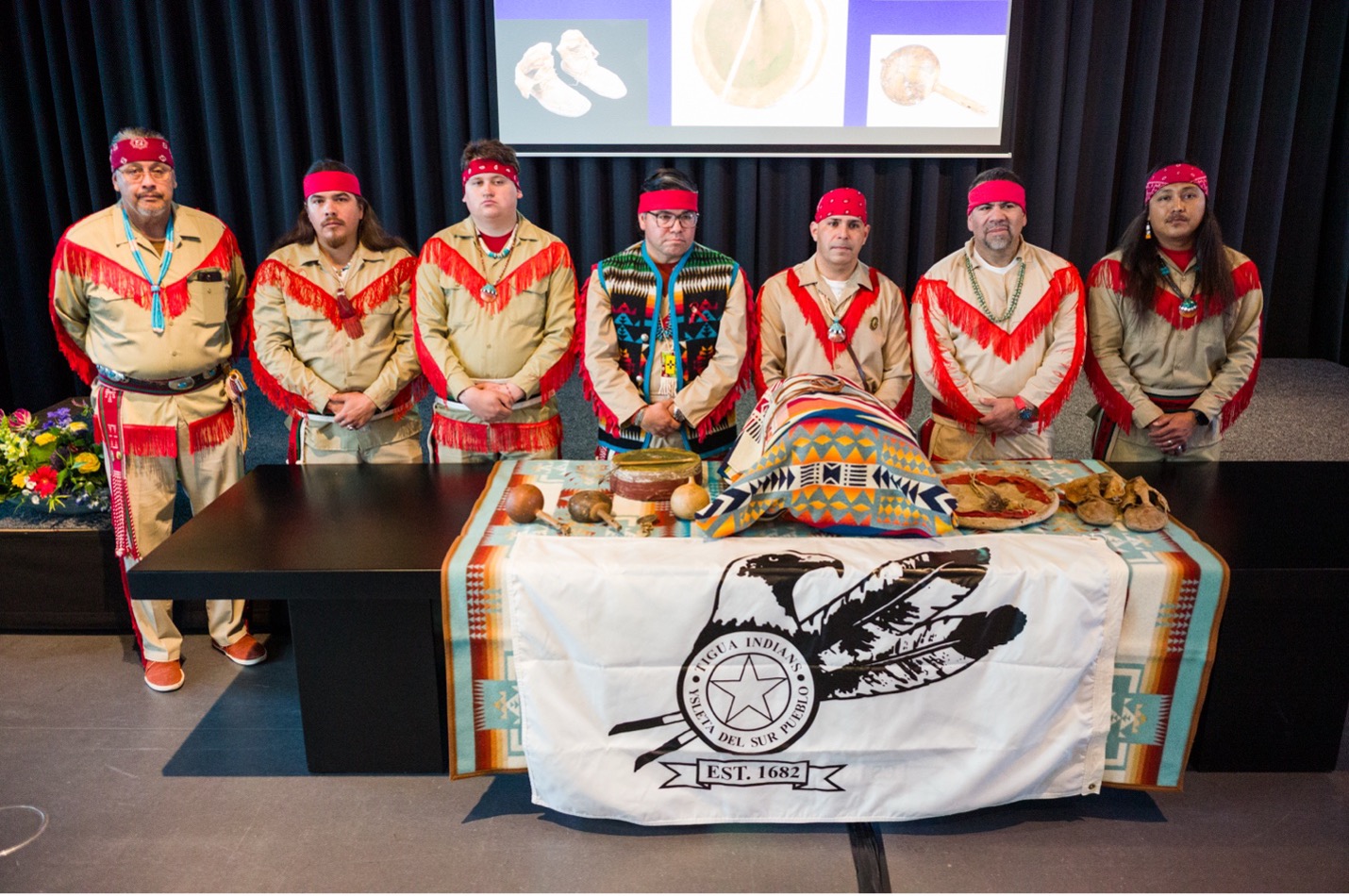Seven ceremonial objects of the Ysleta del Sur Pueblo
Provenance research blog #2
In the blog series of the Colonial Collections Consortium, we present a historical object from a former colonial context or situation, currently stored in a museum in the Netherlands that has been the focus of provenance research. With this blog, we want to give an insight of the importance of provenance research and show the different ways of approaching this type of research. Therefore, each blog explains the steps taken by the respective museum or provenance researcher to carry out the research. Which stories lie behind the object and what can they tell us about the Dutch colonial past?
In focus this time: seven Tigua sacred ‘objects’ of the Ysleta del Sur Pueblo community, United States.
Brief historical background
The Ysleta del Sur Pueblo (or YDSP) is a federally recognized Native American tribe in El Paso, Texas. The Tigua people (pronounced Tiwa) of YDSP were deeply impacted by Spanish and later US colonialism. In 1680, following a revolt against Spanish rule, they were forcibly relocated from New Mexico to Texas. In the nineteenth century, they, like many other Native American tribes, were driven to extreme poverty due to the appropriation of their land and resources by both the US and state governments. It was in this context of duress that the objects were bought in 1882 by the Dutch anthropologist Herman Frederik Carel Ten Kate jr., during an expedition to study Native Americans. This acquisition was done at the request of Lindor Serrurier, the then director of the National Ethnographic Museum (a precursor of Wereldmuseum Leiden), using Dutch government funding.
In 2024, the YDSP Pueblo, with the support of the US government, submitted a restitution request to the Dutch government. In question were five (and ultimately seven) objects managed by Wereldmuseum Leiden. This request argued that since these are ceremonial and spiritually important representations of the culture and faith of the Pueblo, they should be returned. Following this request, Wereldmuseum carried out provenance research about the objects, leading to the conclusion that their transfer to the Netherlands and this museum in 1883 represented a case of involuntary loss.
About the Tigua ceremonial ‘objects’
The seven objects – the fragment of a headdress, two drums and respective drumsticks, three rattles, a shield, and moccasins – constitute sacred, communally owned belongings of the Tigua people of YDSP. Of particular importance are the double-headed drum and drumstick, which is believed to be the twin of the Pueblo’s remaining ceremonial drum. According to tradition, both were made from the same tree 350 years ago in New Mexico, before the Tigua’s exile to El Paso. The restitution claim of 2024 noted the drum’s importance to the ceremonial cycle and its connection to the Winter clan (now the Pumpkin and Corn villages), while the remaining drum belonged to the Summer clan. Without the Winter clan’s drum, the Summer clan’s drum is used for both summer and winter dances.

The current “restitutionary conjuncture”
The Tigua’s first official request for repatriation was made by the Tribal Council of Ysleta del Sur Pueblo in 2014, although the Tribal Council claims there were earlier requests, dating back to 1967. This request was rejected by Wereldmuseum on the basis that the objects had been legally sold. While several meetings and negotiations between the Tribal Council and the museum followed this decision, effective change only took place in 2024.
In recent years, important steps have been taken in the Netherlands and beyond towards the development of restitution policies, making it possible to speak of the current moment as a “restitutionary conjuncture”, to quote provenance researcher Klaas Stutje (2025). More specifically, in 2021, the Dutch government published its policy vision on collections from a colonial context, followed in 2022 by a Letter to Parliament on its implementation. Since then, a few hundred historical objects have been returned, mainly to Indonesia and Sri Lanka.
The provenance research
Following the 2024 restitution request, the Wereldmuseum conducted provenance research on the Tigua’s sacred artefacts. The research and resulting report focused on 1) the history of the YDSP to better understand the context during which the objects had been collected; 2) Ten Kate’s expedition to North America in 1882-83, to understand the role played by the Dutch government and museum in this expedition, as well as the anthropologist’s collecting practices; 3) Ten Kate’s visit to YDSP and the seven objects; and 4) the history of the relationship between Wereldmuseum and Pueblo.
The first point was answered mainly using secondary resources. The second and third points involved analysing the correspondence related to the financing by the Dutch government of the purchase of objects by Ten Kate and his donation of those objects to the museum in 1883. The museum’s inventory cards and a travel report by Ten Kate included important information that detailed Ten Kate’s use of unethical acquisition methods, involving coercion, threats and bribery. His travel report mentioned the objects and suggested that the sale by War Captain Bernardo Holguin had not been entirely voluntary, since on the following day, Holguin expressed remorse about this sale and tried to reverse the transaction.
Information shared by representatives of YDSP in the context of recent dialogues with Wereldmuseum and the 2024 restitution claim also offered vital information about the acquisition context, leading to a more critical and context-sensitive understanding of the conditions in which the objects were taken. Of particular importance were the arguments that Holguin had been coerced by Ten Kate to sell the objects, that his willingness to sell sacred communal artefacts was due to the extreme poverty experienced in YDSP at the time, and that Holguin was in fact not authorized to sell these since he didn’t own then but rather managed them for the community. This information was central to the final decision regarding the restitution claim.
Reflection
The provenance research showed that the acquisition of the objects in 1882 was against the wishes of YDSP, even if it resulted from the sale of the items by a member of the community. Dialogue with the community in more recent years – and mainly in the context of the restitution requests – reiterated this fact and emphasized the ongoing importance of these objects to the Tigua’s ceremonies and rituals. This reexamination of the historical context in which the objects were acquired offers an important example of how complex it is to accurately assess the conditions and power (dis)balances in place when objects are collected or seized, without disregarding the agency of the original owners. Crucially, it shows that provenance research and a critical understanding of historical and cultural circumstances should, as much as possible, result from an open and reciprocal dialogue between museums and the communities of origin.

Final words
In response to the restitution request by the US and YDSP, and on the advice of the independent Colonial Collections Committee (in line with the Dutch Policy vision on collections from a colonial context), the Dutch Minister of Education, Culture and Science Eppo Bruins decided in early 2025 to return the seven objects unconditionally. A ceremony to mark this return took place on 20 March 2025 at Wereldmuseum Leiden (see photograph).
To better understand the historic and current meanings of objects, and how to ethically care for them, information about their origin and acquisition histories are essential. Provenance research is an ongoing process for museums. The Colonial Collections Consortium supports institutions that manage collections with this work by sharing knowledge and information, and by offering stakeholders a network. Would you like to know more or share information with us? Please contact us!
References and further reading
The provenance research presented here was carried out by provenance researcher François Janse van Rensburg (Wereldmuseum). The report and the advice of the independent Colonial Collections Committee can be found here. The information presented in this blog derives from this report, as well as email communication with François Janse van Rensburg. More information about the return of the seven objects can be found on the websites of the Dutch government and of Wereldmuseum. For more information about the Dutch policy for dealing with collections from a colonial context, please see the website of the Colonial Collections Consortium.